Some cruise lines try to be all things to all people. Viking isn’t one of them.
Since its founding in 1997, the upscale cruise brand has carved out a niche catering to a certain type of thoughtful, inquisitive, generally older traveler looking to explore the world and learn a thing or two along the way.
Most Viking customers are approaching their retirement years — or are already there — and they’re eager to finally see all the places they didn’t have time to visit when raising kids and establishing careers in their younger years.
For more cruise guides, tips and news, sign up for TPG’s cruise newsletter.
For this subset of travelers, Viking offers a wide range of both ocean and river cruise itineraries that have a heavy focus on the destinations visited. These aren’t cruises where it’s all about the ship.
Viking voyages bring a lot of extended stays in ports where passengers get more time to explore historical sites and experience the local culture than is typical on cruises. Unlike most lines, Viking offers included-in-the-fare tours in every port, allowing every passenger on board to get a guided experience during stops without having to pay extra. (In general, Viking voyages are highly inclusive, in keeping with its “no nickel-and-diming” philosophy.)
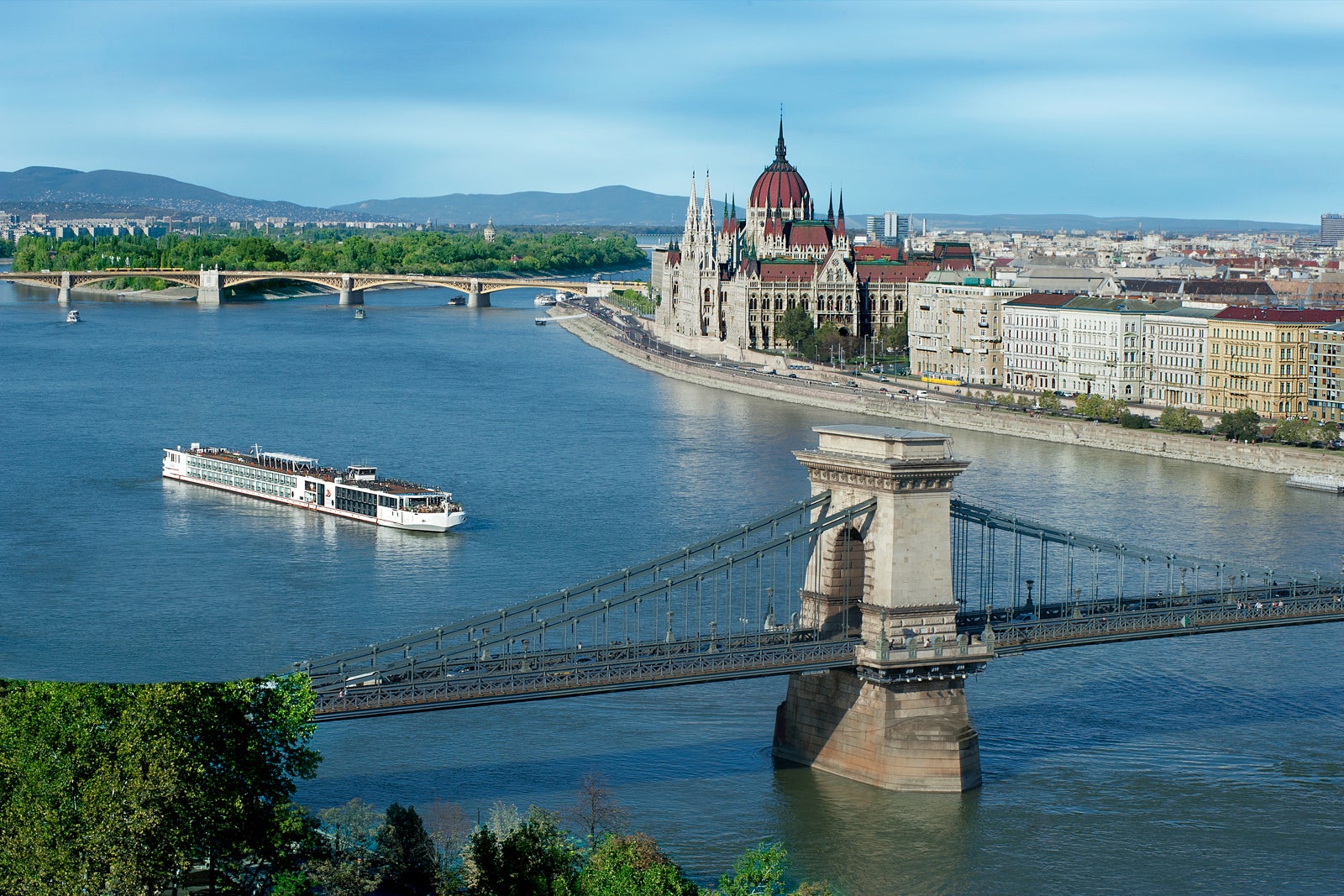
On board, Viking’s programming revolves heavily around what the line calls “cultural enrichment” — lectures by experts on topics related to the places its ships visit, as well as cultural and culinary offerings that often have a local tie-in.
What Viking ships don’t offer is a lot of onboard amusements aimed at families and younger travelers. In fact, the line doesn’t even allow children under the age of 18 on its ships. It’s one of the only major cruise brands in the world with such a rule.
Viking ships also don’t cater to the party crowd. If it’s a floating celebration you’re looking for in a vacation, this isn’t the line for you.
As Viking founder Torstein Hagen likes to say, a Viking cruise is the “thinking person’s cruise, not the drinking person’s cruise.”
Related: A beginners guide to picking a cruise line
3 things TPG loves about Viking
- Its focus is on destinations and enrichment.
- The elegant, Scandinavian-influenced design of its ships.
- Its “no nickel-and-diming” philosophy.
What we could do without
- The lack of fitness centers on Viking river ships.
The Viking fleet
Viking has more ships than any other major cruise brand in the world, more than 90 in all. It also has both ocean ships and river ships — something that is unusual among major lines. Despite this, it has one of the easiest-to-understand fleets.
That’s because the vast majority of Viking’s ocean vessels are carbon copies of each other. If you’ve seen one, you’ve seen them all. Ditto for the line’s river vessels.
Viking currently operates 11 ocean ships, nine of which are nearly identical. The exceptions are two recently unveiled Viking ocean vessels specifically designed for expedition cruising — a type of cruising that involves traveling to remote, hard-to-reach places on hardy vessels that carry their own landing craft.
The nine nearly identical ocean ships — Viking Saturn, Viking Neptune, Viking Mars, Viking Venus, Viking Jupiter, Viking Orion, Viking Sky, Viking Sea and Viking Star — began rolling out in 2015. Each has the capacity for 930 passengers. Six more nearly identical vessels are scheduled to debut between 2024 and 2028, and Viking has options with a shipyard to order four more of the ships for delivery in 2029 and 2030.
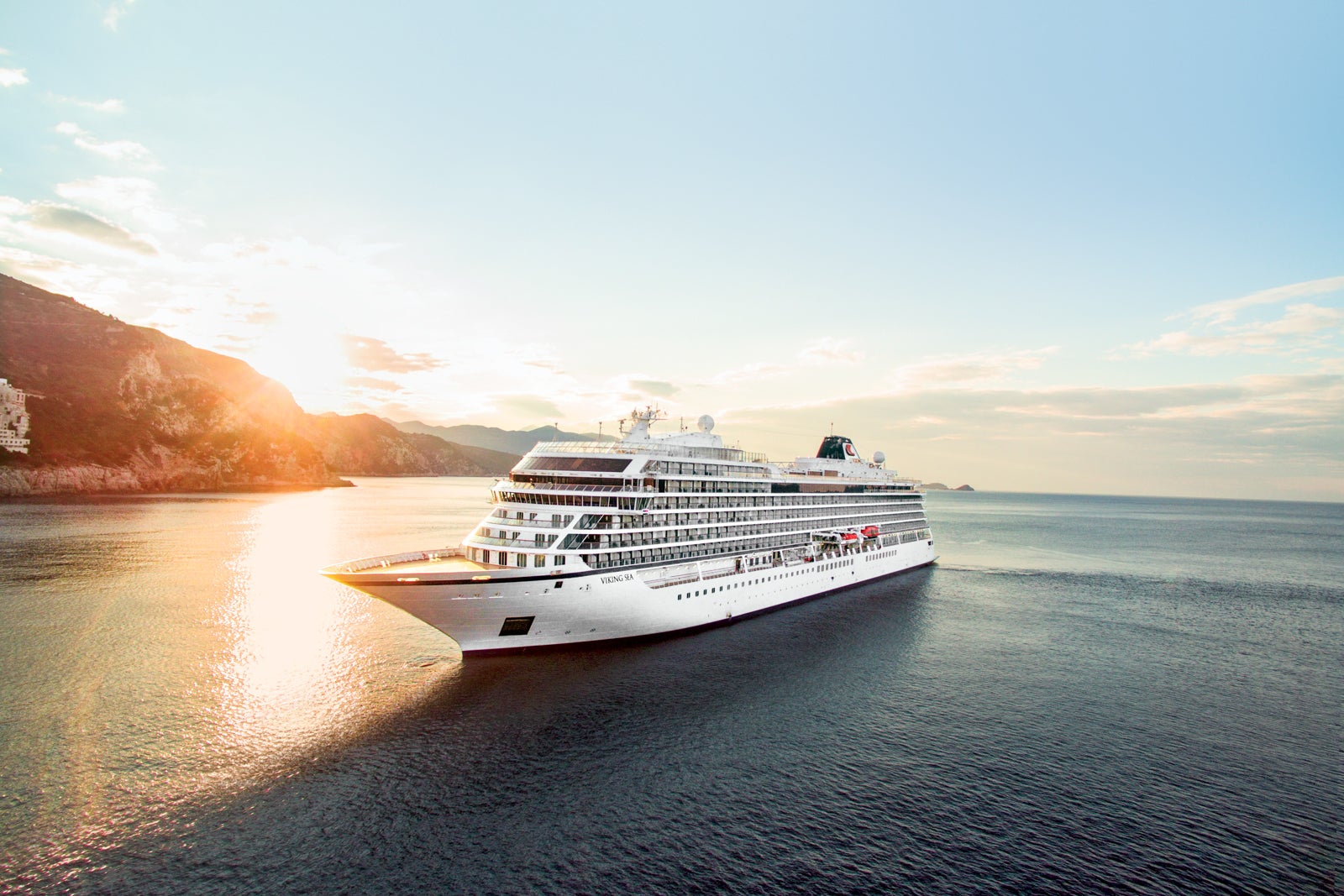
At 47,800 tons, these ocean ships are less than a fourth the size of the giant megaships being built by the likes of Royal Caribbean and MSC Cruises, in keeping with Viking’s focus on intimate, upscale voyages. Big floating resorts, they aren’t.
Note that there is one more vessel in this same series, called Zhao Shang Yi Dun, that has been permanently transferred to a joint venture that operates for the China market. When it debuted in 2017, it originally catered to the North American market and was called Viking Sun.
Viking’s two expedition ships, Viking Octantis and Viking Polaris, are smaller than the above vessels, as is typical for expedition ships, and carry 378 passengers at maximum occupancy.
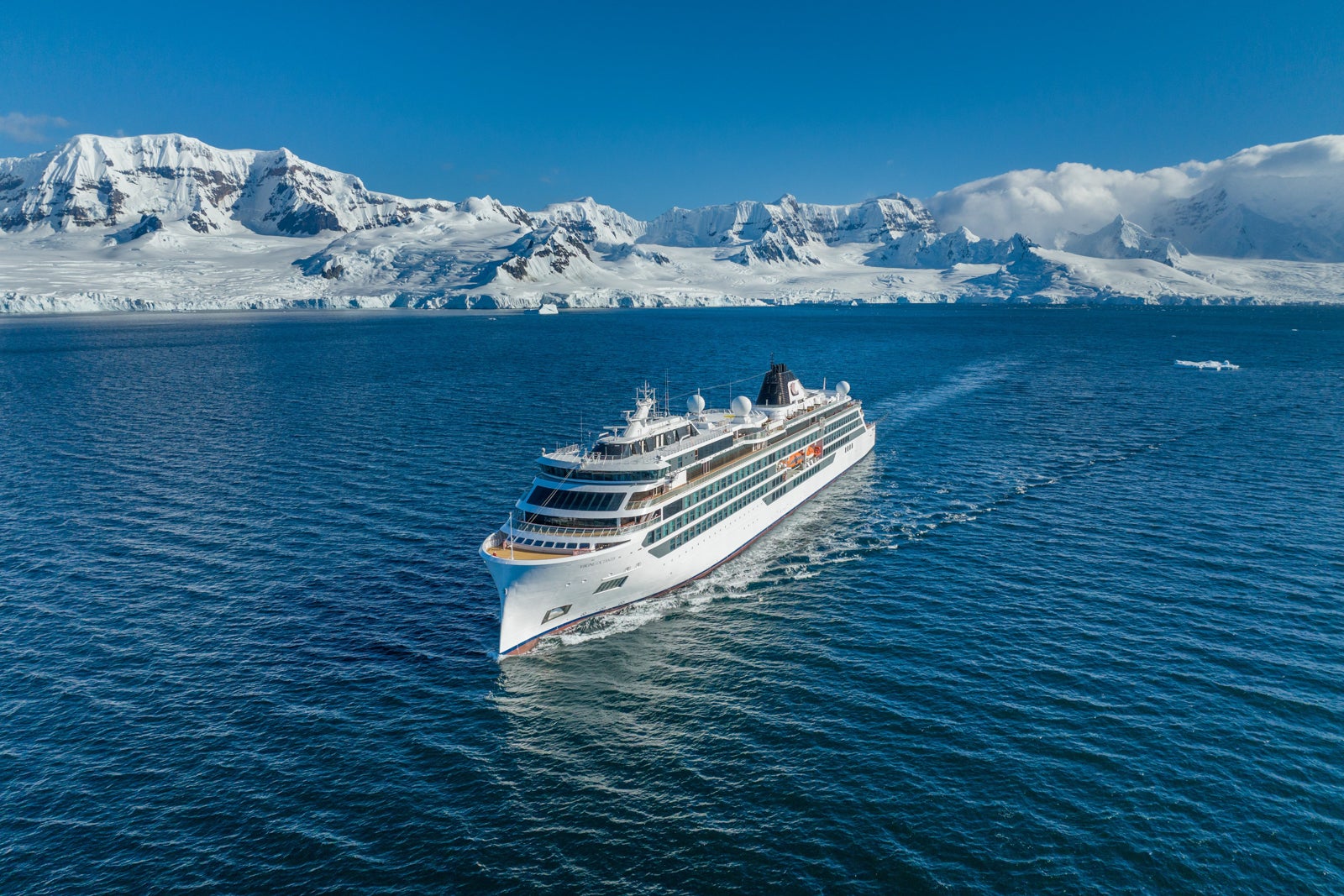
Then there are the river ships. At last count, Viking had 80 river ships in its fleet — an astounding number that is the result of blistering growth over the past decade. (As recently as 2012, the line operated just 29 river ships.)
As noted above, almost all of Viking’s river ships are of the same basic design and are known as the Longships — a reference to the historic vessels used by Vikings in the Middle Ages.
Most Viking Longships are 443 feet long, the perfect length to fit into the locks on many of Europe’s rivers. Viking has also built slightly shorter versions of the Longships measuring 262 feet, 361 feet or 410 feet in length specifically to sail on rivers where lock sizes or other navigational factors require a smaller vessel. The 410-foot-long versions of the vessels, for instance, were specifically built to be able to sail into the heart of Paris on the Seine River.
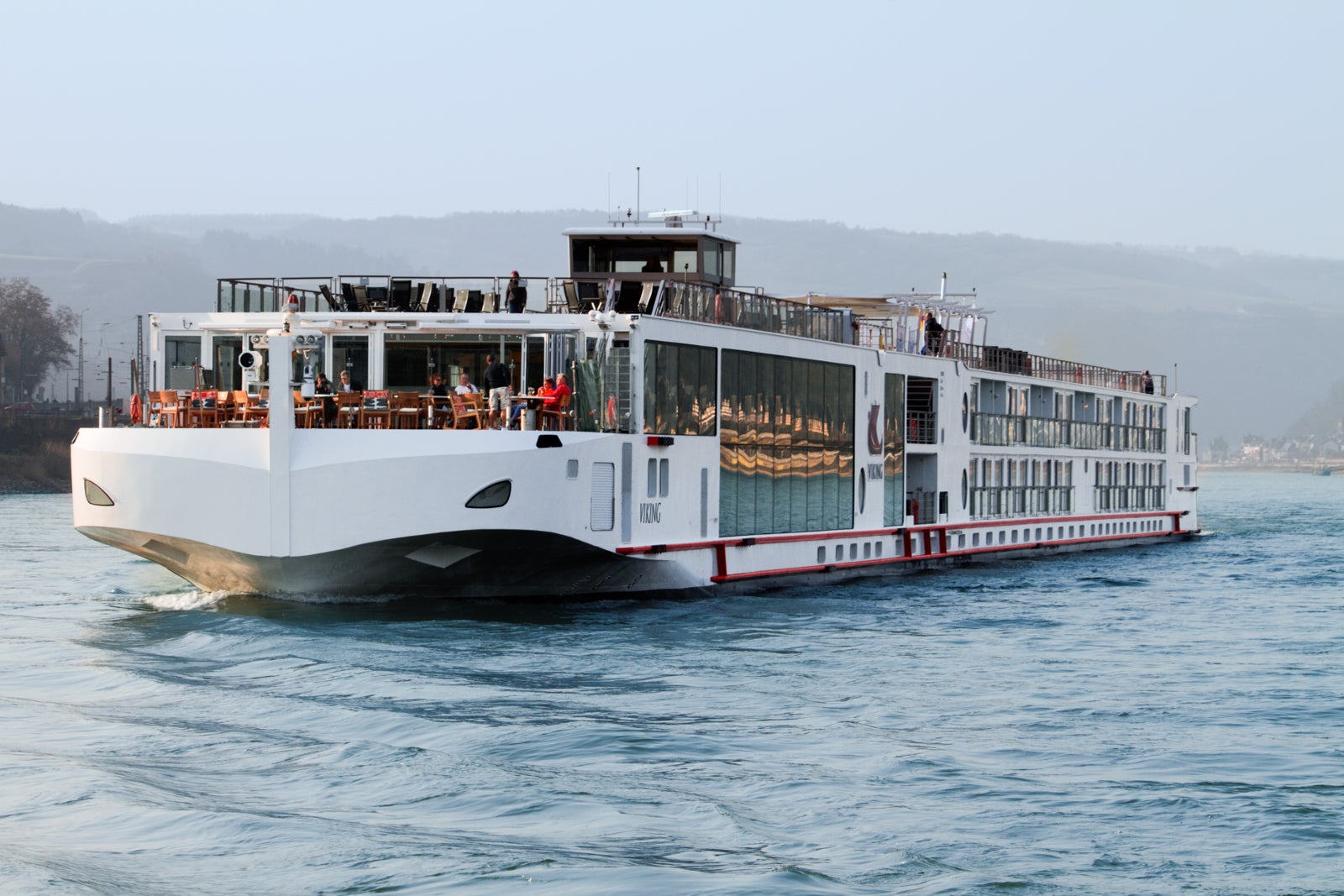
While most Viking river ships are Longships, there are a few exceptions in the Viking river fleet. Viking operates several smaller, purpose-built vessels on the Nile River in Egypt and the Mekong River in Southeast Asia. It also has several older river vessels that predate the Longships that operated in Russia and Ukraine until recently. (For now, river cruise itineraries in both countries are on hold due to the Ukraine war.)
Viking also recently began sailings on the Mississippi River with a new ship specifically designed for the river and its tributaries.
Related: The 3 types of Viking ships, explained
Destinations and itineraries
Viking has one of the most diverse arrays of itineraries of any cruise line, mostly due to the fact that it operates both ocean cruises and river cruises.
Viking has a particularly large footprint when it comes to European river itineraries, with a wide range of sailings on nearly every European river of any note.
You’ll find Viking river ships operating on the Rhine, Main and Danube in Central Europe; the Seine, Rhone, Dordogne, Garonne and Gironde in France; the Douro in Portugal; and the Moselle and Elbe in Germany. Until recently, Viking also operated cruises on the Volga in Russia and the Dnieper in Ukraine. (As noted above, sailings on the latter two rivers are on hold due to the war in Ukraine and may not resume for many years.)
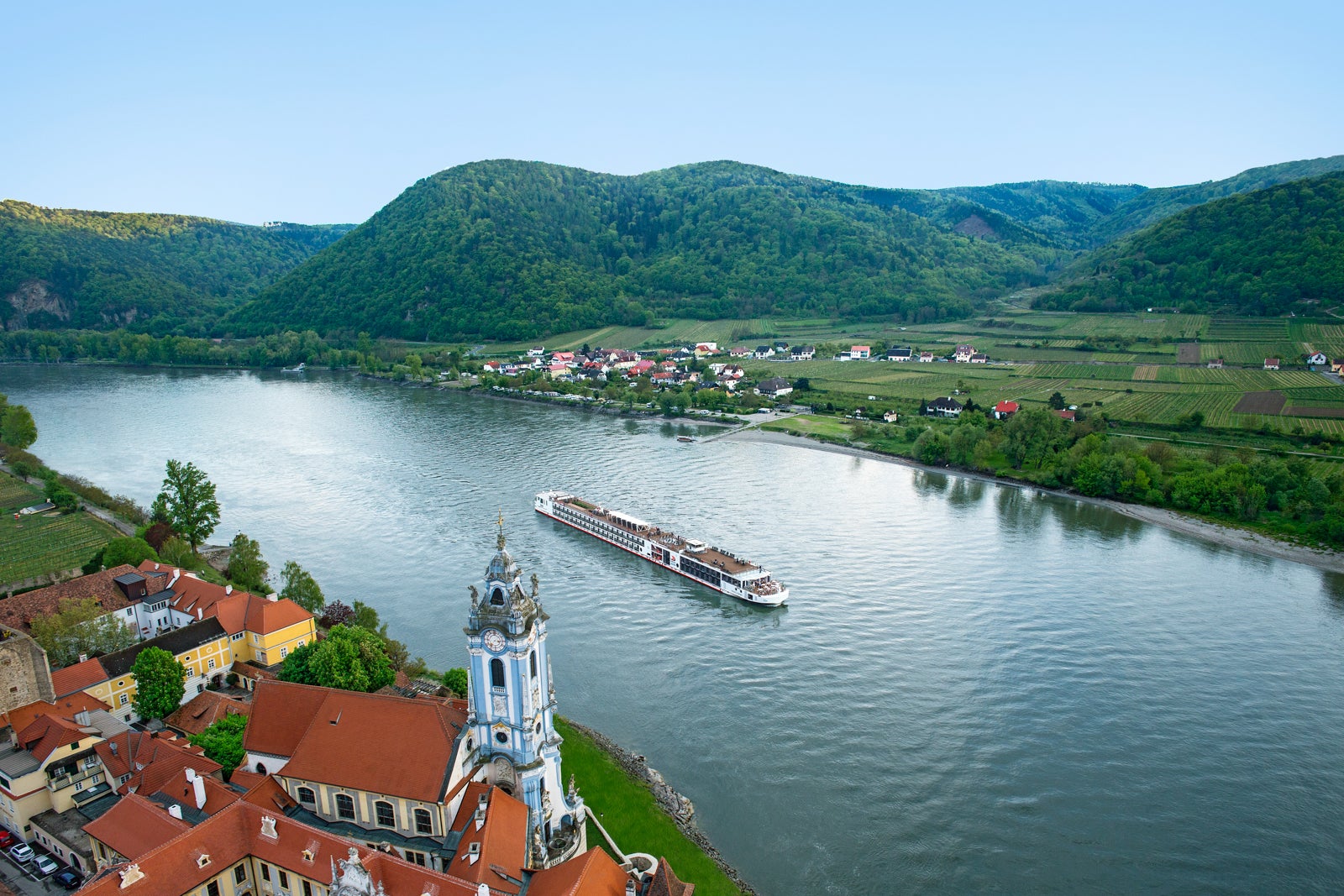
Viking also operates river trips on the Nile in Egypt and the Mekong River in Southeast Asia, and it recently began trips on the Mississippi River.
The line’s ocean ships can be found in nearly every ocean and sea around the world, from North America to Europe and Asia.
Viking’s ocean ships have a major presence in Scandinavia and Northern Europe, which the line considers its home turf. (The company was founded by a Norwegian family.) It’s also a big player in the Mediterranean. You’ll find Viking’s ocean ships in other key cruise destinations as well, such as Alaska, the Caribbean and Panama Canal, Canada and New England, South America, Asia and Australia.
In addition, in early 2022, the line began its first cruises to Antarctica with its first expedition ship, Viking Octantis. That summer, the same vessel launched the line’s first voyages in the Great Lakes — a destination that only a handful of cruise operators visit.
You’ll find everything from eight-day cruises in the Mediterranean to 138-day around-the-world voyages among the line’s voyages.
Related: The 5 best destinations you can visit on a Viking ship
Who sails Viking
Most Viking passengers are North Americans who are approaching retirement age or already retired. The company’s core market is people who range in age from 55 to 75 years, although it does draw some passengers who are younger or older.
In general, it’s an educated crowd, with many passengers coming from professional backgrounds or a life of running their own businesses. They’re often people who have spent years focused on work and building up savings for retirement, and they’re finally ready to start enjoying the fruits of their labor by spending some of the savings on travel to places they’ve long put off visiting.
They’re also people who can afford a relatively high-end vacation experience. While Viking doesn’t market itself as a luxury line, some would call it that. Viking vessels are full of luxury touches, with the pricing to match (see more on what Viking trips cost at the bottom of this story).
In general, you’ll find a lot of couples on Viking ships and some solo travelers. You’ll also find the occasional multigenerational group — a retired couple traveling with their working-age adult children, for instance.
However, unlike nearly every other cruise brand, what you won’t find are families with young kids. As noted above, Viking doesn’t allow passengers under the age of 18 on its ships — a key differentiator for the brand as compared to other cruise lines.
Cabins and suites
Is a balcony something you can’t live without when staying in a cabin on a cruise ship? Viking could be your line.
Viking is one of the only cruise brands in the world that offers a balcony with every cabin on every ocean ship it operates — even the least expensive, smallest cabins. That’s something that even the most upscale of Viking’s ocean cruise rivals including Oceania Cruises, Azamara, Seabourn, Silversea Cruises and Regent Seven Seas Cruises can’t say.
Viking’s ocean ships also offer a large number of suites, many of which are quite spacious. Even the smallest cabins on Viking’s ocean ships are large by cruise ship standards at 270 square feet, and the largest suites measure nearly 1,500 square feet.
If you’re looking for a big open room on an ocean cruise (and are willing to pay for it), Viking offers you plenty of options.
Related: The ultimate guide to Viking cabins and suites
Viking also offers lots of balcony cabins and suites on its river ships, something that isn’t always the case in the river cruise business, where space on vessels is at a premium. Unlike its ocean ships, Viking’s river ships aren’t all-balcony-cabin vessels.
Designwise, Viking cabins and suites across all categories are modern and elegant in an understated sort of way, with Scandinavian-influenced furnishings and decor that tie to the Norwegian heritage of the company’s founder.
You’ll find beds topped with crisp, white duvets and Scandinavian throws, comfortable contemporary sofas and chairs in neutral tones, and light-wood desks and side tables that combine to offer a residential feel in bedroom areas. Soothing, minimalist colors — think creams, grays and lighter blues — are the order of the day.
Bathrooms in Viking cabins are serene, modernist escapes with luxurious travertine-lined walls, Scandinavian-influenced wood-veneered vanities, shiny white sinks and chrome fixtures.
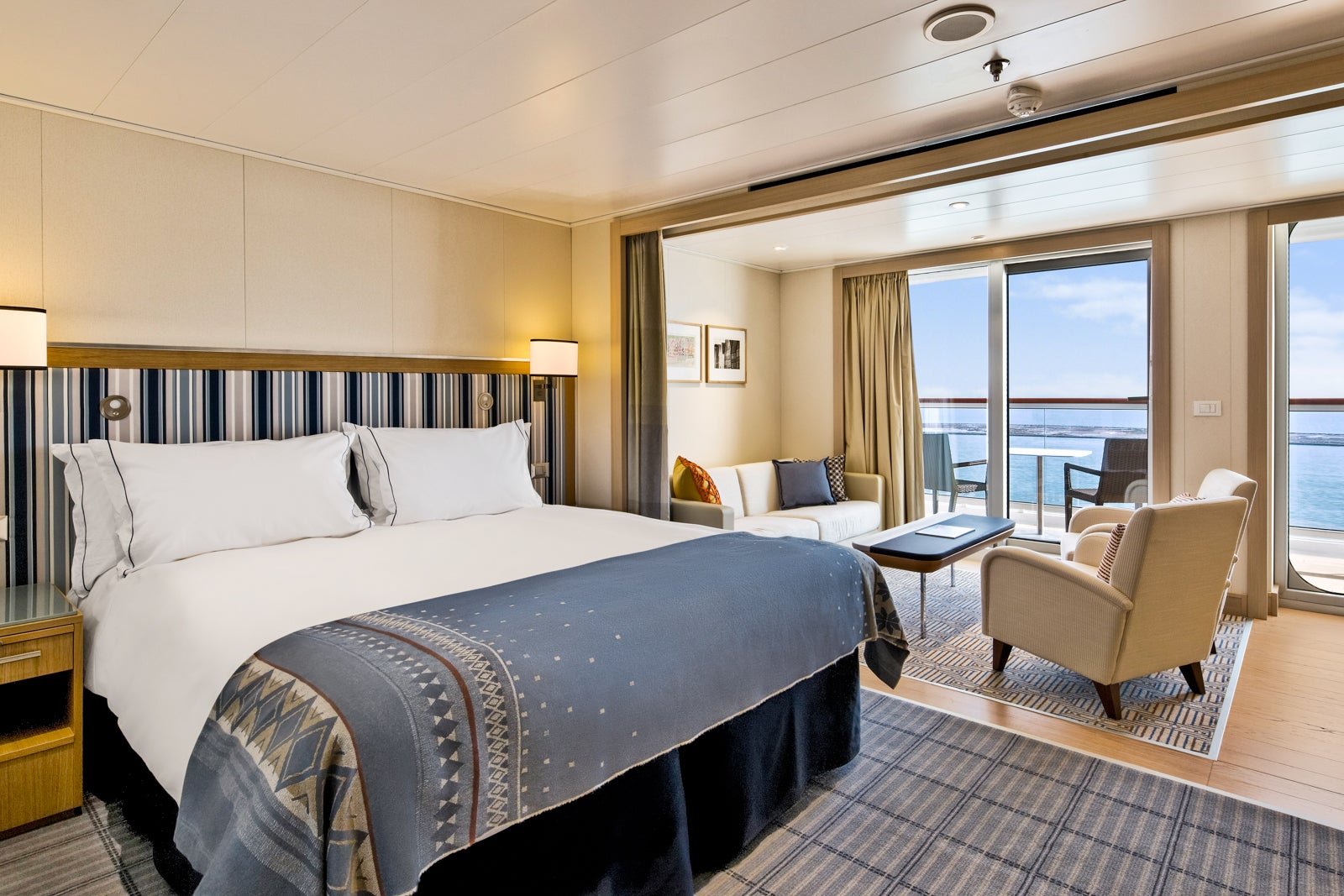
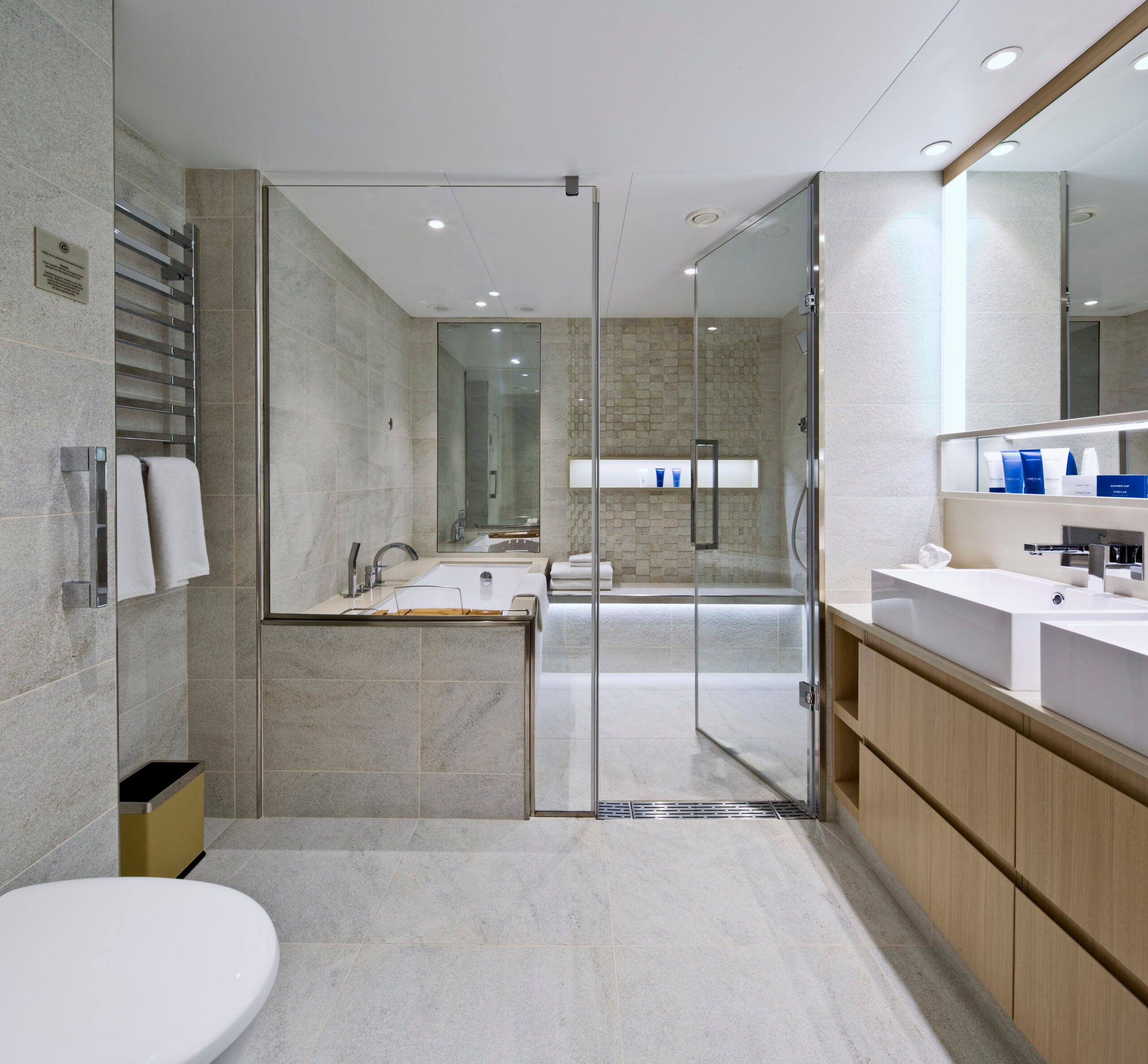
In keeping with the high-end nature of the brand, Viking cabins and suites have a lot of upscale touches, from sumptuous bedding that envelops you to heated floors in bathrooms. The rooms aren’t overly flashy, though.
What they are is eminently functional, with storage in all the right places, lots of outlets for charging your devices and lighting right where you need it. We love the reading lights built into the fabric headboards, which are in addition to the lamps on bedside tables. You won’t have trouble seeing the pages of the Viking Daily activity newsletter while lying in a Viking cabin bed.
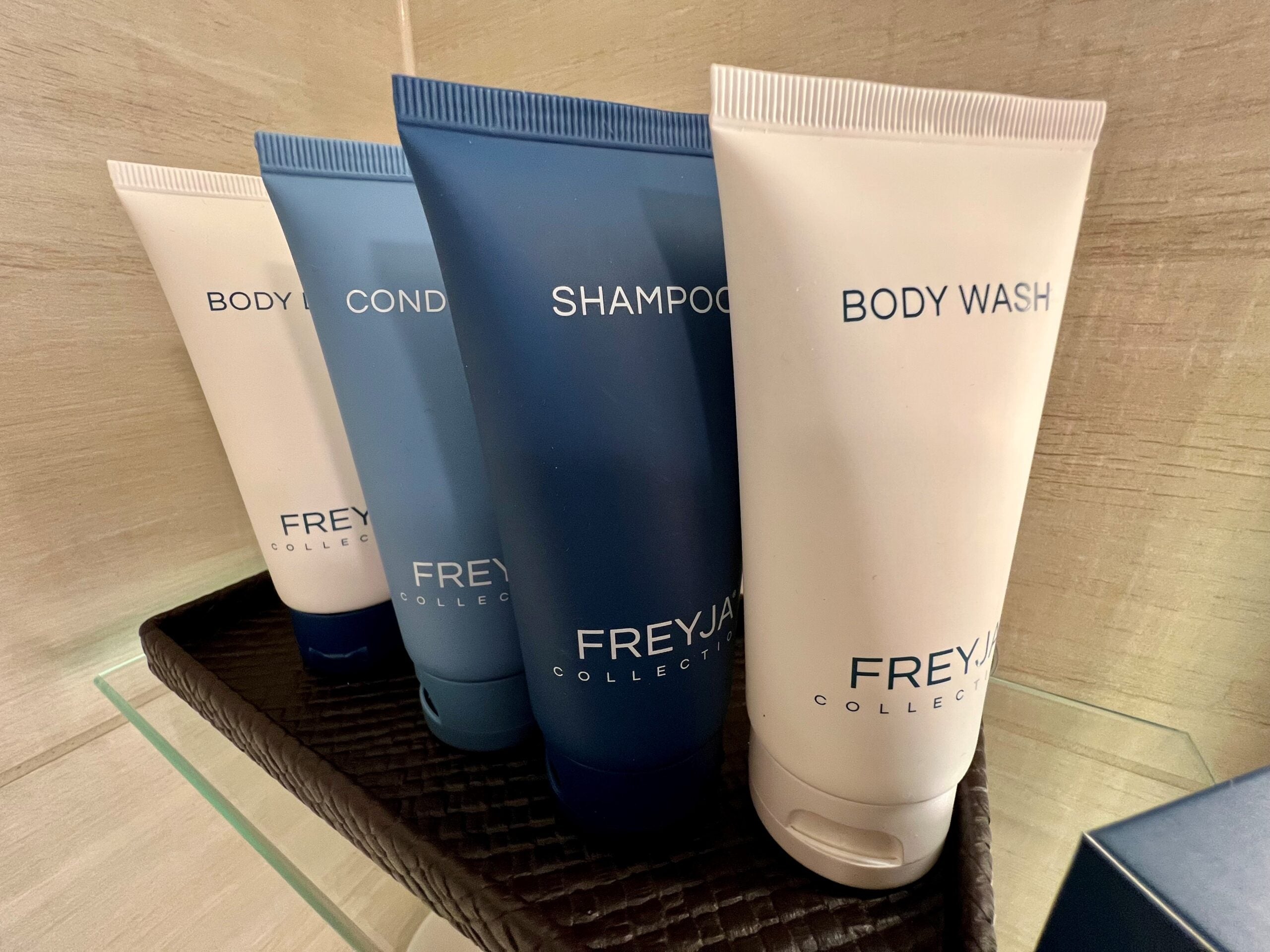
Other little touches in Viking cabins that show a line thinking about functionality as much as decor include the large and clear lettering on the Freyja toiletries that you’ll find in every Viking cabin bathroom. The toiletries were specifically designed with bigger and clearer lettering than is common for toiletries on cruise ships and at hotels so that the line’s older customers would have no trouble differentiating the body wash from the body lotion and shampoo.
Restaurants and dining
The number of restaurants and other dining options that you’ll find on Viking ships will vary greatly depending on whether you are sailing on an ocean or a river ship.
All of Viking’s oceangoing ships, which are much bigger than its river ships, have at least four and usually more outlets serving food of some sort.
Every one of the line’s 930-passenger ocean ships has a main restaurant (called, simply, The Restaurant) with rotating menus that include dishes that tie to the destination where the vessel is sailing. There also are casual buffet eateries called World Cafe on every vessel. You’ll probably eat most of your meals in one of these eateries.
The main restaurants on these ships are notable for their walls of glass that can slide open to create al fresco dining, something that is unusual in the cruise world.
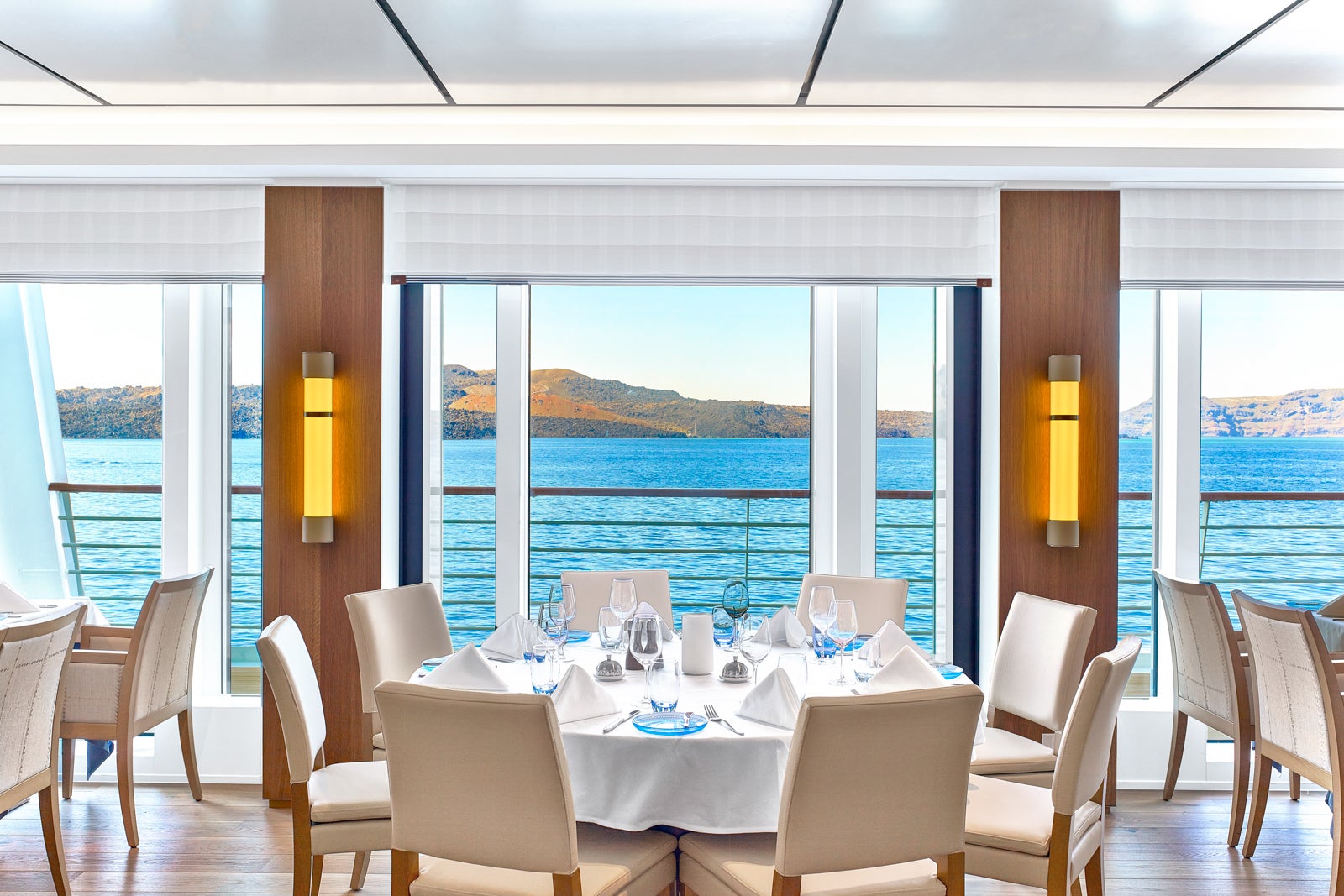
Each of the 930-passenger ocean ships also has two smaller restaurants with specialized cuisine: Manfredi’s, a high-end Italian eatery, and The Chef’s Table, which offers a five-course tasting menu themed around a specific cuisine that changes every few days.
There’s no extra charge for dining in the smaller restaurants, but reservations are required. Each passenger is only allowed to make one to three reservations per cruise at the eateries, depending on which category of cabin they have booked.
Viking’s bigger ocean ships also have poolside grills that serve made-to-order gourmet hamburgers and other grill items. Passengers can grab a snack — with a Norwegian twist — at the forward-facing lounges atop the ships, which are home to a small food counter called Mamsen’s. Named after Viking founder Torstein Hagen’s mother (Ragnhild “Mamsen” Hagen), it offers authentic tastes of Norway such as traditional heart-shaped waffles, specialty cakes and the brown goat cheese that is found around the country.
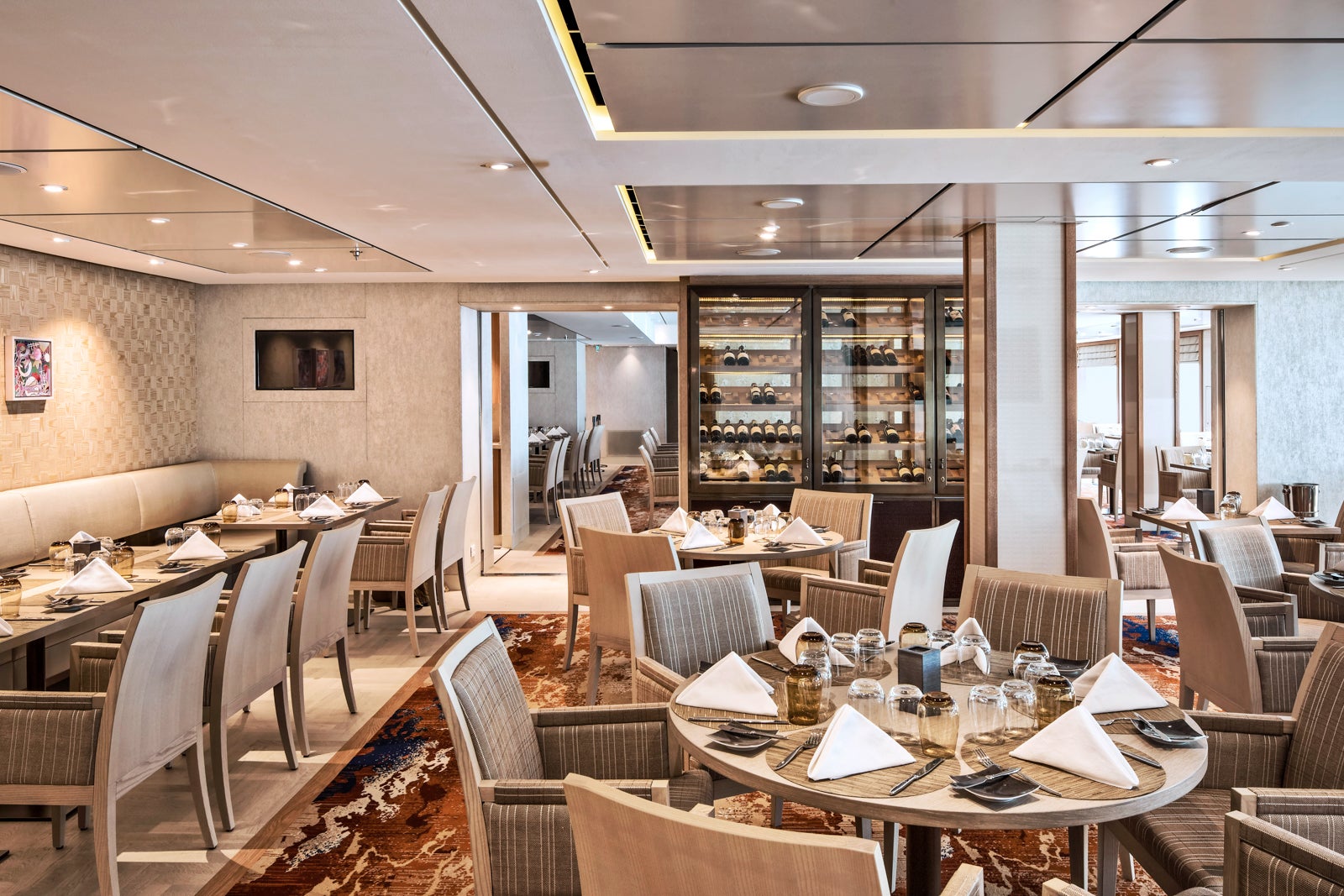
Passengers will also find finger sandwiches, scones and teas in the afternoon at the glass-topped Wintergarden lounge at the top of every vessel.
The line’s smaller expedition ocean ships, Viking Octantis and Viking Polaris, offer four of the above venues: The Restaurant, World Cafe, Manfredi’s and Mamsen’s.
Viking’s river ships, by contrast, typically offer just two eateries: a main restaurant where passengers eat most of their meals and a smaller, casual buffet with indoor and outdoor seating.
Fun fact: The Manfredi’s restaurants on Viking ocean ships are named after former Silversea Cruises owner Manfredi Lefebvre d’Ovidio, a friend of Viking founder Torstein Hagen. Some Silversea ships, in turn, have lounge areas named after Hagen.
Entertainment and activities
Many of the activities on board Viking’s ocean ships revolve around “cultural enrichment,” to use a phrase often used by Viking executives. On any given day, you might find an expert on one of the destinations you’re visiting lecturing in the theater, or a classical musician performing in the central atrium, known as The Living Room. The ships also offer some traditional entertainment, including production shows with singers and dancers.
On the line’s river ships, you’ll also find onboard lectures, usually related to the destinations the ships are visiting, as well as destination-related demonstrations and tastings. (On a Seine River voyage, you might have a tasting of local French cheeses or French wines, for instance).
You’ll also find live piano music in the evenings in river ship lounges.
Theaters, lounges and shows
Each of the line’s ocean ships has a theater at its front that is home to production shows, movie showings (with fresh popcorn available) and enrichment lecturers.
In keeping with Viking’s focus on cultural immersion, lecturers often have expertise related to the places you’ll be visiting on your sailing. The line also draws a wide range of interesting and accomplished people from all walks of life to serve as guest lecturers, including well-known academics, diplomats and even astronauts.
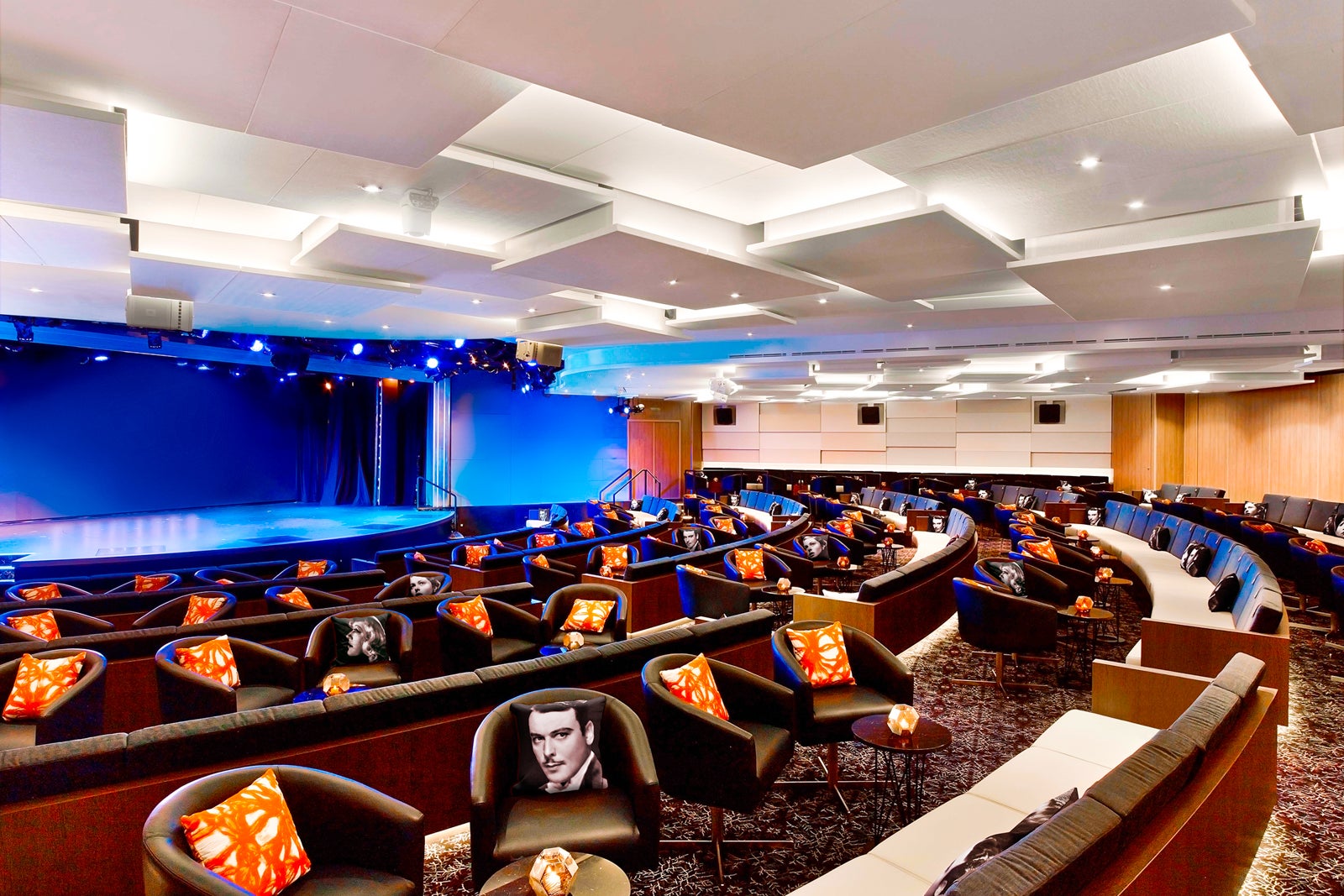
In addition to the theater, a secondary lounge space on the ships called Torshavn is home to musical entertainment at night. It’s also known for an extensive collection of Armagnacs, with one from almost every year of the past eight decades. (A fun game is to try the Armagnac from your birth year. Just be careful — some years are far more expensive than others.)
You’ll also find musicians including pianists and guitar players performing at times in the Viking Living Room — a three-deck-high, atrium-like space at the center of the ship. Filled with comfortable seating areas and home to a bar, the Viking Living Room serves as a central meeting point for passengers throughout the day and night. It’s also home to the ship’s Explorers’ Desk — the equivalent of a guest relations area on other ships.
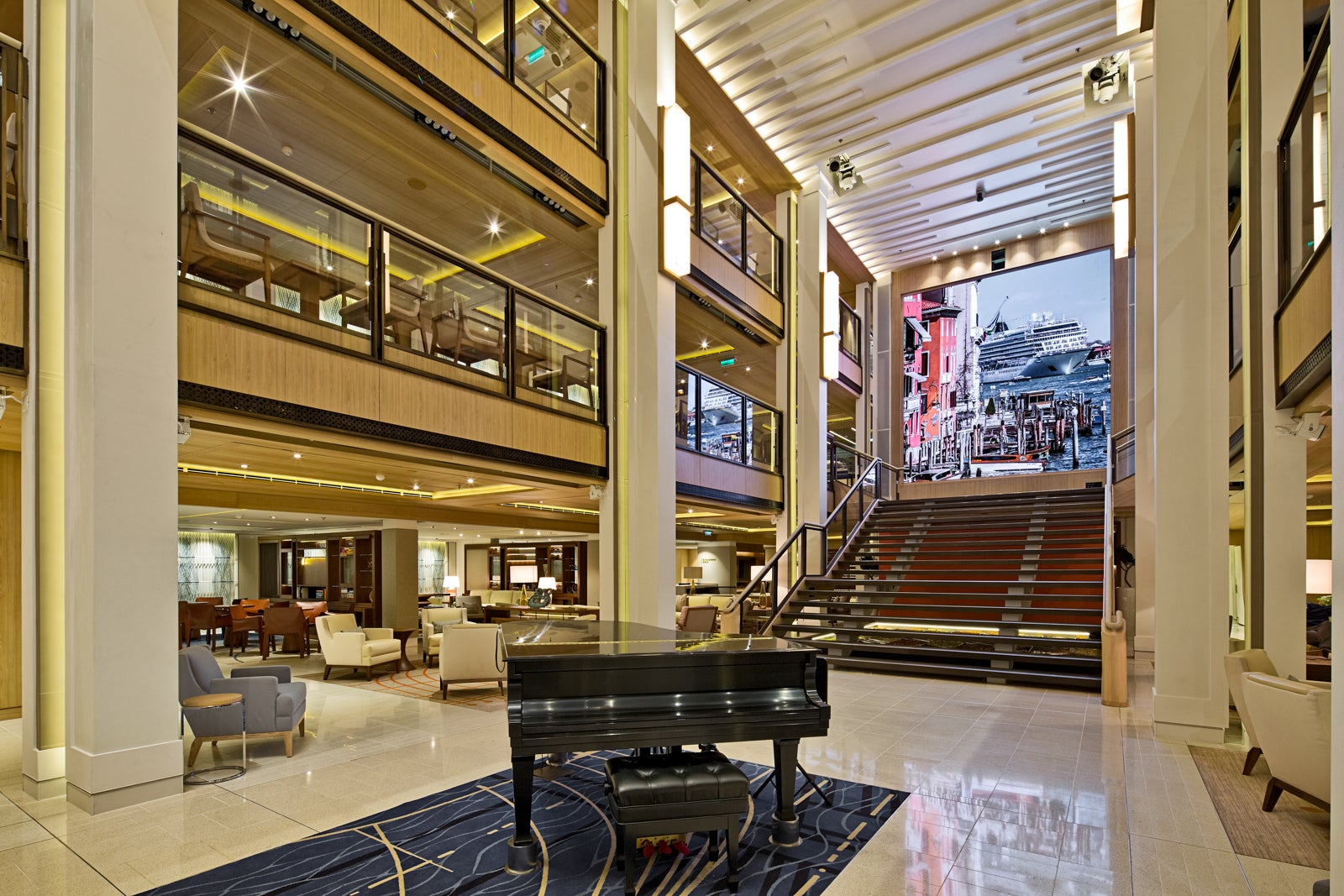
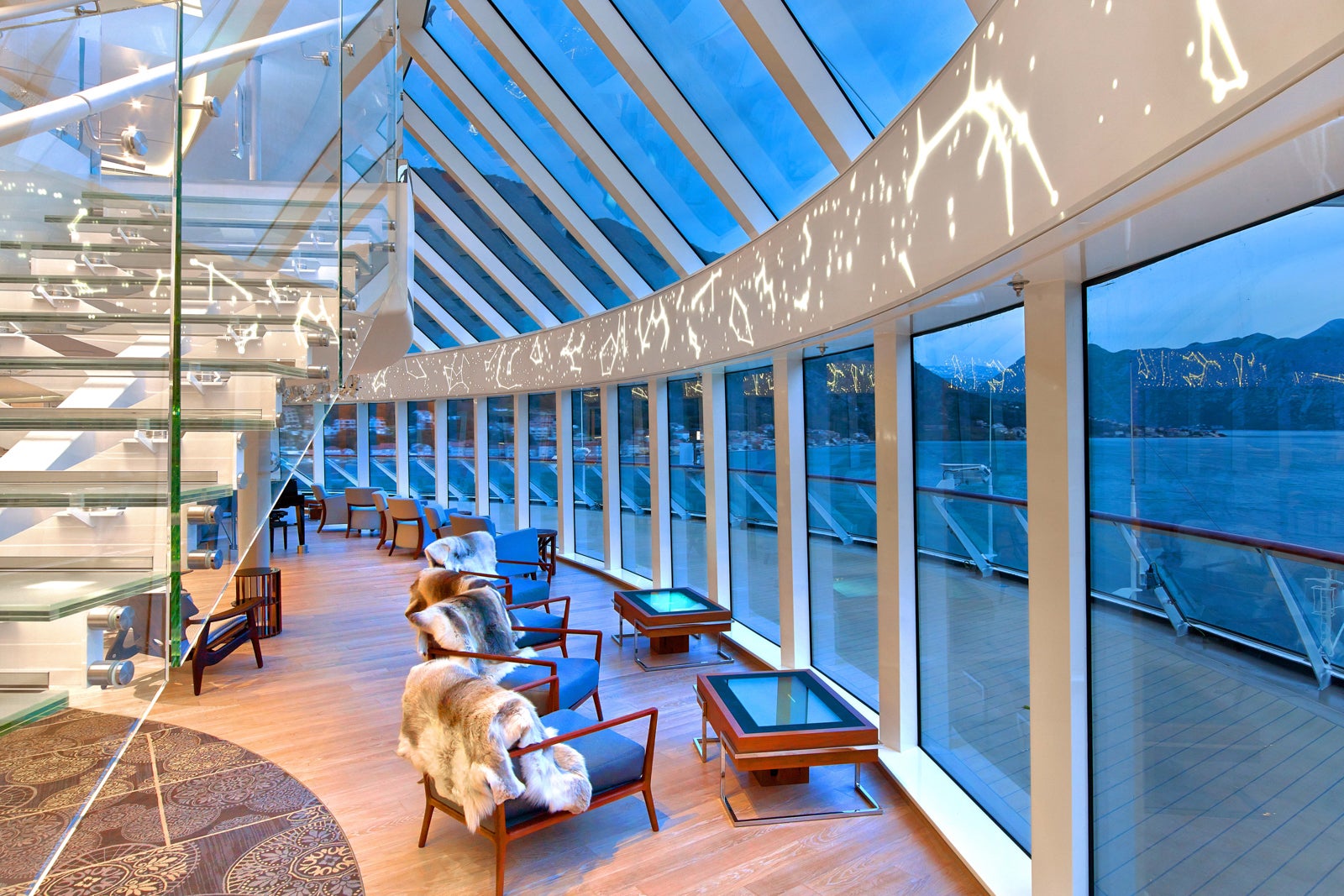
There’s also live music at night in the Explorers’ Lounge, a two-deck-high observation lounge and bar area at the very top of the ship. The Explorers’ Lounge also is home to Mamsen’s, the food counter serving tastes of Norway mentioned above.
The pool deck and other venues
The centerpiece of the top deck of each of Viking’s ocean ships is the main pool area, which is home to a pool, hot tub and rows of lounge chairs, as well as comfortable seating areas.
The entire main pool area is covered with a glass magrodome that can be opened on short notice on warm and sunny days — or closed if the ship encounters inclement weather.
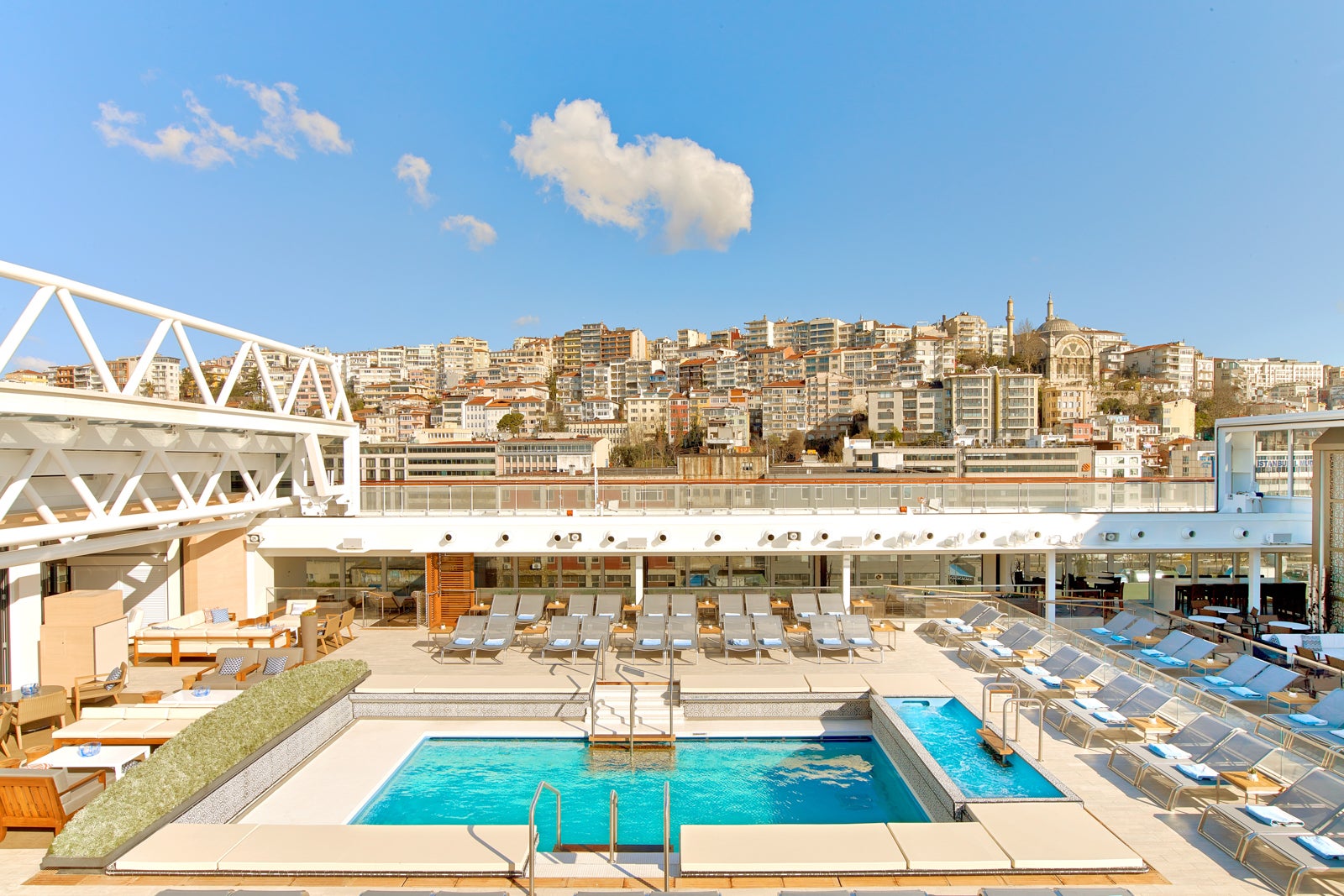
Just behind the main pool area on each of the ocean ships is a lovely, glass-topped lounge with comfortable seating called the Wintergarden that is home to afternoon tea. A den of serenity, it’s one of our favorite places on these vessels.
A secondary pool area with an infinity pool is at the back of each of the ships.
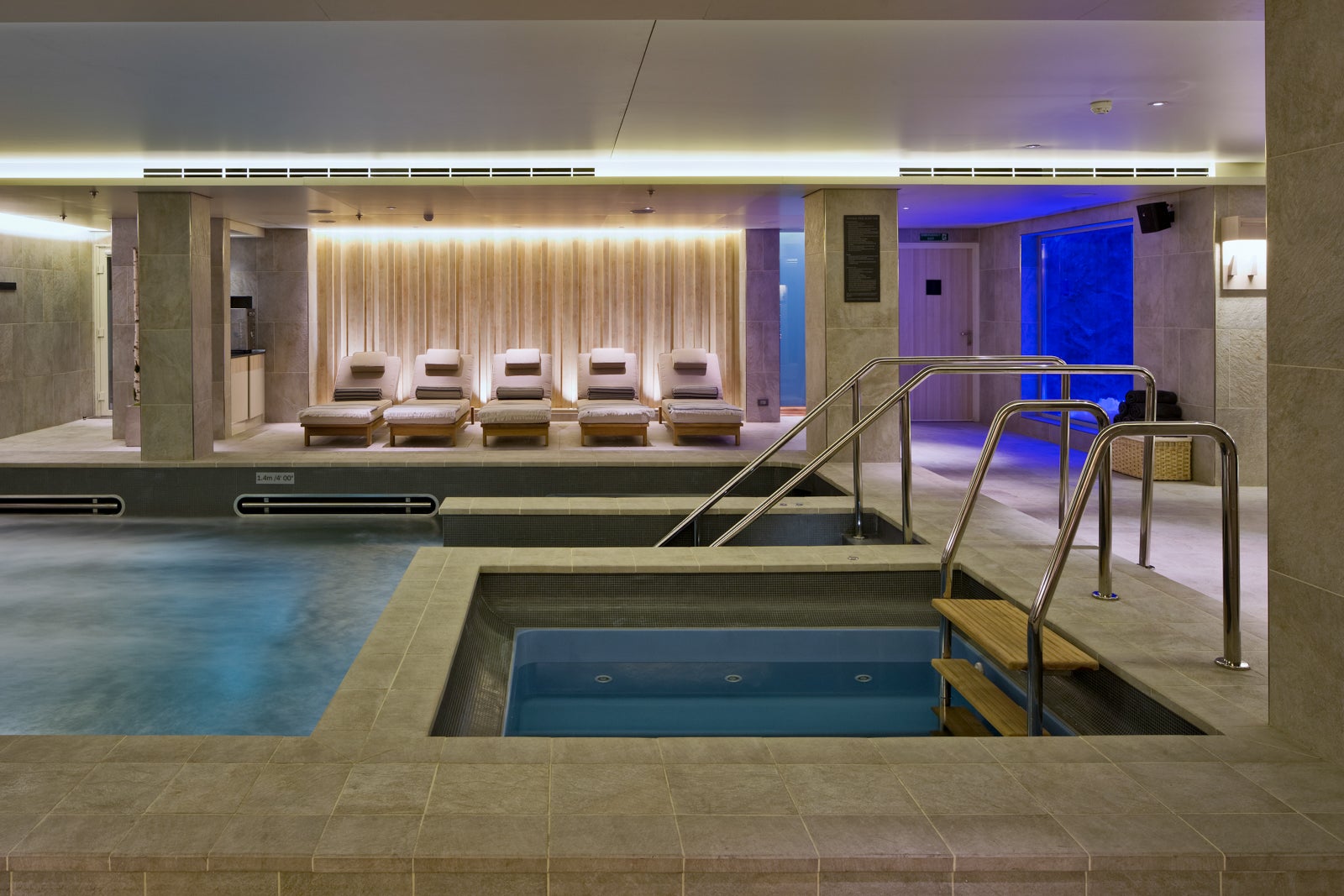
Other interior spaces that are part of the ocean ships include a stylish spa with a thermal suite area that is open to all passengers at no extra charge (something that is not common on cruise vessels) and a fitness center.
Note that Viking river ships do not have fitness centers, which is relatively unusual for river ships. Viking has long argued that few of its customers use fitness centers and the space that would be devoted to one is better used for other things. However, if you’re fitness-obsessed, Viking river ships may not be the best choice for your river trip.
Related: The 12 cruise ships with the most spectacular attractions at sea
Children’s program
Viking does not allow children under the age of 18 on its vessels and thus has no children’s programs on any of its vessels.
What to know before you go
Required documents
Viking operates international itineraries where a passport is required. Passports must be valid for at least six months. Note that it is important that the name on your reservation be exactly as it is stated on your passport or other official proof of nationality.
Gratuities
Viking adds an automatic service gratuity (which it calls a “hotel and dining charge”) of $17 per person per day to final bills, depending on your cabin category. If you are unhappy with the service you receive, you can adjust this amount before disembarking at the Explorers’ Desk. (You can also increase the tip amount if so desired.) Also, a 15% gratuity is added to bills at bars and for drinks at restaurants.
Related: Everything you need to know about tipping on a cruise ship
Wi-Fi
As part of Viking’s “no nickel-and-diming” philosophy, the line offers free Wi-Fi service to passengers on all its ships throughout sailings. Note that internet service can be slow at times of heavy use, as is typical on cruise vessels. In addition, in order to ensure fair usage for all, the line limits some heavy-bandwidth applications, downloads and software upgrades.
Related: Wi-Fi on cruise ships: 5 things to know about internet use on board
Carry-on drinks policy
Unlike many lines, Viking allows you to bring your own wine, Champagne, beer and liquor onto ships at embarkation with no limits. The line also doesn’t charge a corkage fee.
Smoking policy
On all ships, smoking (including electronic cigarettes) is only allowed in designated outdoor areas. It’s forbidden in cabins and on cabin balconies.
Laundry
Some Viking ships, including all of the line’s ocean vessels (including its one expedition vessel), have self-serve launderettes on cabin decks with washing machines, dryers, irons and ironing boards. The launderettes are stocked with detergent for the washing machines that, unlike on many cruise ships with launderettes, do not come with an extra cost.
In addition, most Viking vessels offer laundry and pressing services. Such services are complimentary for passengers staying in certain categories of cabins. Otherwise, fees are comparable to what you’ll pay cleaners at home. Dry cleaning is available on the line’s ocean ships but not on Viking river ships.
Viking’s recently unveiled Mississippi River ship offers self-service launderettes but no send-out laundry and pressing service.
Related: Everything you need to know about cruise ship laundry services
Electrical outlets
All of the line’s vessels have standard North American-style, 110-volt outlets in rooms as well as European-style, 220-volt outlets and USB ports in cabins.
Currency
The currency used on Viking ships is U.S. dollars.
Drinking age
You must be 21 to consume alcohol on Viking ships.
Dress code
During the day, there is no specific dress code, and people dress casually. If it’s a sea day in a warm-weather destination, and you’re bound for the top deck, a short-sleeve shirt and shorts are just fine.
Evenings have an official dress code, but it’s not too formal. The line asks passengers to keep things “elegant casual” when heading to any of the ship’s dining venues, performances or special events. To Viking, that means a dress, skirt or slacks with a sweater or blouse for women, and trousers and a collared shirt for men. A tie and jacket for men are optional. Jeans are not permitted.
This evening dress code is not enforced at the casual World Cafe eateries on Viking ocean ships, where passengers can go even more casual in the evenings.
Related: Cruise packing list: The ultimate guide to what to pack for a cruise
Viking cruise loyalty program
Viking doesn’t have a loyalty program in the traditional sense — one where passengers earn points every time they travel with the brand and progress through multiple tiers that bring an ever-expanding array of perks. However, it does offer a few basic perks for past guests.
Once you travel with the brand for the first time, you will automatically be enrolled in the Viking Explorer Society. As part of this society, you will receive:
- A credit of $200 per passenger anytime you book a Viking voyage within one year of your last Viking voyage. If you reserve within two years, you receive a $100 credit.
- An invitation to a members-only Viking Explorer Society cocktail party when sailing on Viking ships.
- Early word by email or regular mail on new Viking Cruises itineraries and new ships, as well as special limited-time offers.
Note that the credits mentioned above cannot always be combined with promotions the line offers.
Related: The ultimate guide to Viking’s cruise loyalty program
How much does a Viking cruise cost?
Viking sailings aren’t inexpensive. Ten-night “Greek Odyssey” voyages to the Greek Islands start at $3,999 per person. That works out to roughly $800 per day for a couple sharing a room. Some of the line’s more exotic sailings, such as its expedition trips to Antarctica, cost even more. Fourteen-night Antarctica trips start at $13,995 per person — about $2,000 per day for a couple.
Related: 6 ways to travel to Antarctica in luxury and style
Still, as is typical for cruise lines at the high end, Viking includes a lot in its base price. In addition to a room on board and all meals, the fares include beer, wine and soft drinks with lunch and dinner; specialty coffees, teas and bottled water around the clock; shipboard Wi-Fi; and (perhaps most notably) a shore excursion in every port. The latter is something relatively few lines roll into their base fares, and shore excursions can be expensive.
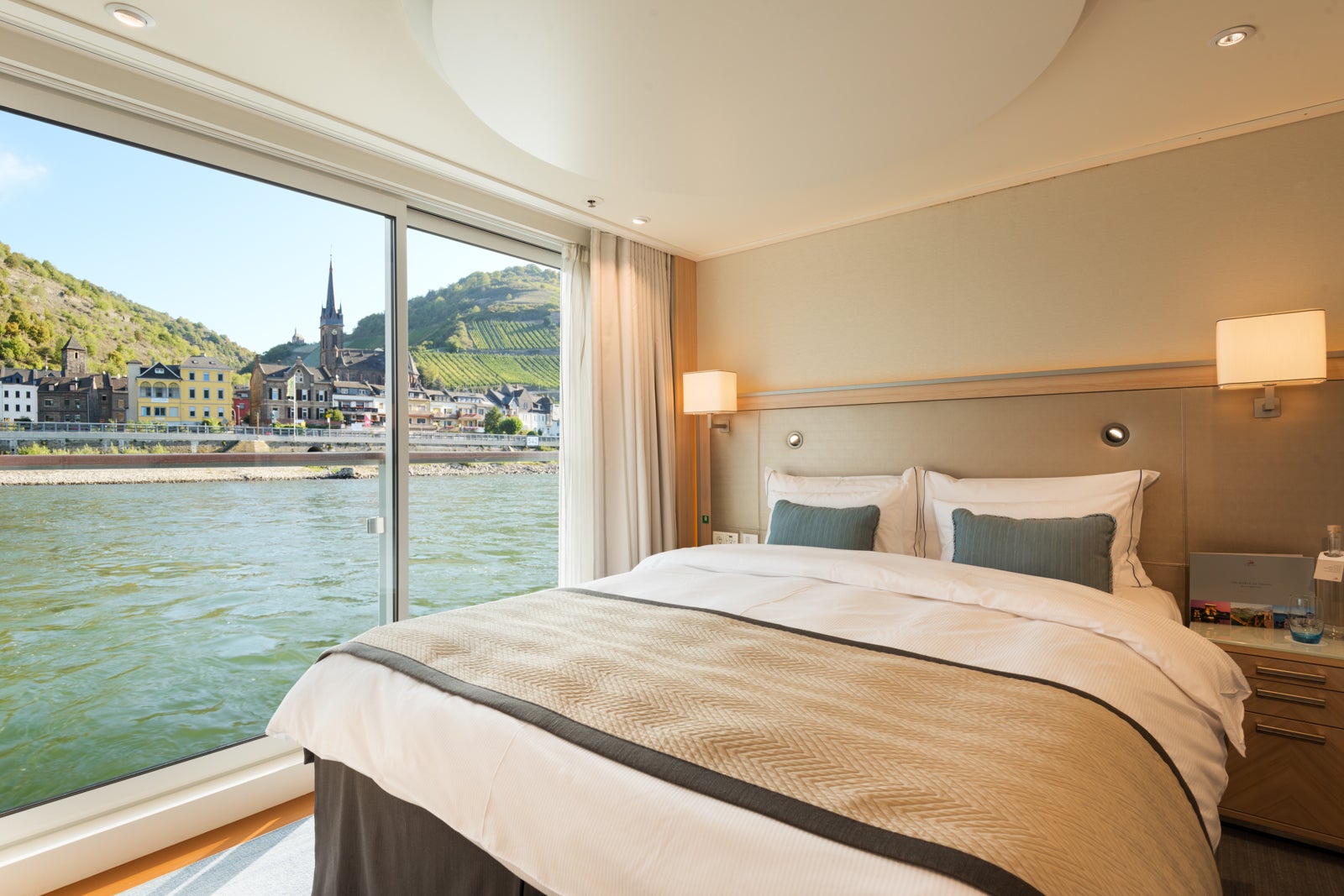
Viking also includes access to the thermal areas of its spa in its base fares. Such access almost always comes with an extra charge on cruise vessels.
Viking fares do include port taxes and fees, which can add up to hundreds of dollars per sailing. Most other lines do not include port taxes and fees in their base fares and add them later in the booking process.
Note that Viking does charge extra for two key things that many luxury lines such as Silversea, Seabourn and Regent do not: alcoholic drinks at bars and gratuities. This is one reason some cruisers do not consider Viking at quite the same level as those other brands.
How to book
If you’re sure you know what sort of cabin you want, on which ship, on which itinerary — and about a dozen other things — you can head over to Viking.com and book directly.
That said, given the complexity of booking a cruise — there are a lot of decisions to make during the booking process, trust us — we always recommend that you use a seasoned travel agent who specializes in cruises.
A good travel agent will quiz you about your particular interests, travel style and preferences, and steer you to the perfect cruise line, ship, itinerary and cabin for you. An agent can also help you if something goes wrong before, during or after your voyage.
If you’re sure that Viking is your line, look for a travel agent who specializes in trips with the brand. You want someone who knows all of the line’s many itineraries in detail and, preferably, has sailed on or at least inspected some of the line’s vessels, too, to understand the various cabin types and onboard amenities.
Related: How to book a cruise with points and miles
Whether you use a travel agent or not, make sure to maximize your credit card spending when paying for the cruise by using a credit card that offers extra points for travel purchases. This could be the Chase Sapphire Reserve, which offers 3 Ultimate Rewards points per dollar on travel and dining (excluding the annual $300 travel credit). There’s also the Chase Sapphire Preferred Card, which offers 2 Ultimate Rewards points per dollar on travel (and 3 Ultimate Rewards points per dollar on dining).
Bottom line
Viking can be defined as much by what it isn’t as what it is. It’s not a line for families with young children. It’s not a line that offers megaships topped with every sort of amusement known to humans. And it’s not a line for the party crowd.
What it is is a line that has focused very specifically on “thinking person’s cruises” that offer a deeper dive into the destinations that its ships visit than is typical at many lines. It’s all about exploring the world and doing so in comfort.
Planning a cruise? Start with these stories:
- The 5 most desirable cabin locations on any cruise ship
- The 8 worst cabin locations on any cruise ship
- A quick guide to the most popular cruise lines
- 21 tips and tricks that will make your cruise go smoothly
- 15 ways cruisers waste money
- 12 best cruises for people who never want to grow up
- What to pack for your first cruise
